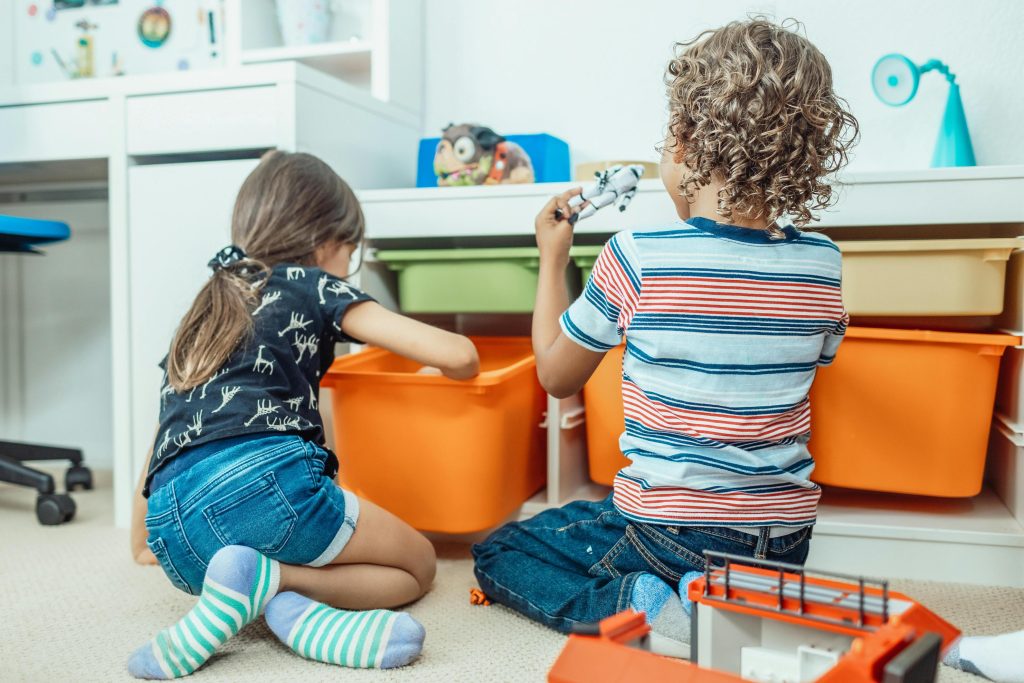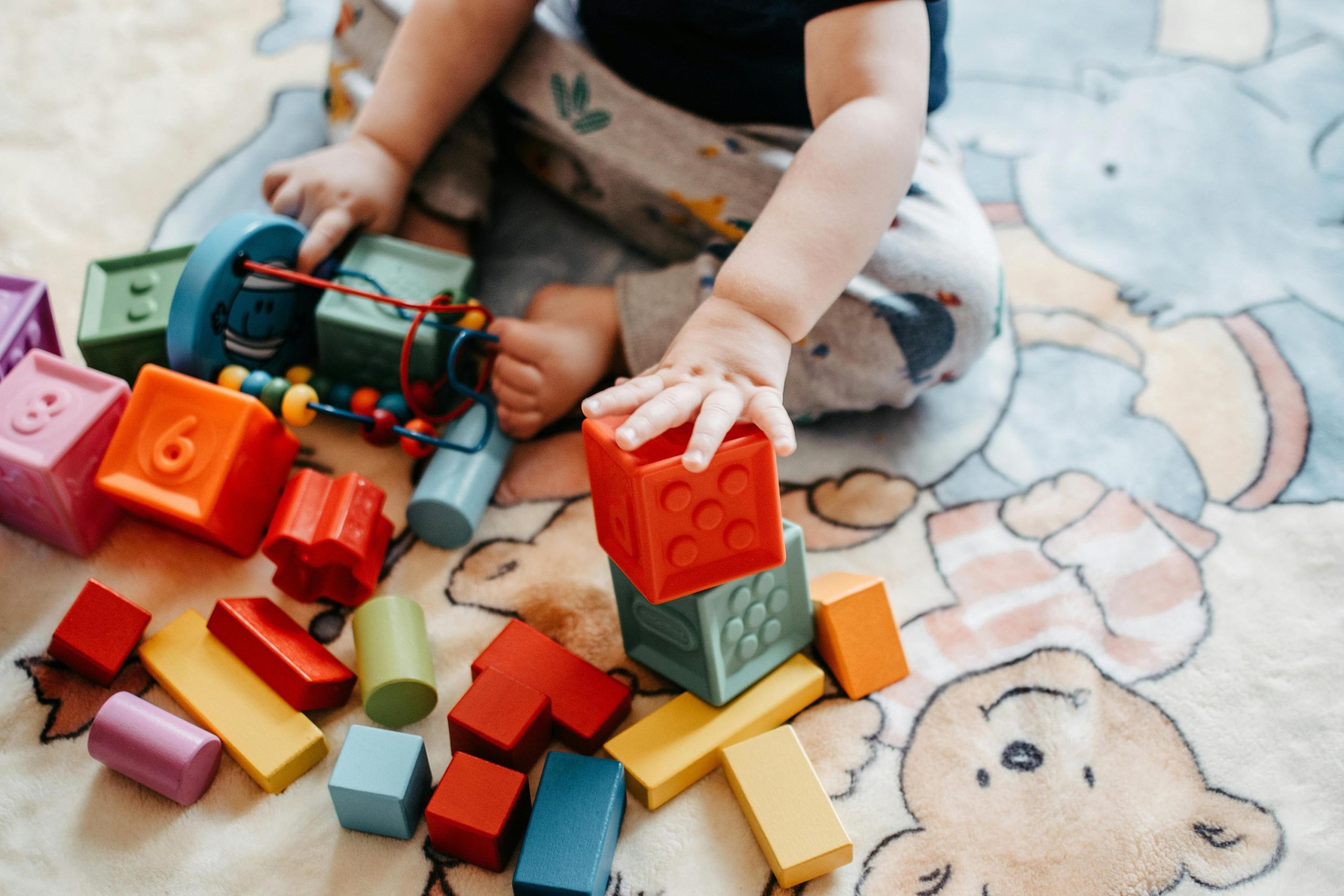How to Organize Toys in a Small Room: Creative Storage Solutions
Keeping a small room tidy, especially when it’s filled with toys, can be a challenge. However, with some creative storage solutions and smart organization techniques, you can keep the space neat while maximizing every square inch. In this guide, we’ll cover practical tips for organizing toys in a small room, making it easier to maintain cleanliness and reduce clutter.
1. Declutter and Sort Before Organizing
Before diving into organizational solutions, it’s essential to declutter and sort the toys. Start by going through all the toys in the room and removing any items that are broken, outgrown, or no longer played with. A clear-out will help you see exactly what you need to store and eliminate unnecessary items.
Steps to Declutter:
- Separate Toys by Type: Gather similar toys together (e.g., stuffed animals, building blocks, action figures) to see how many of each type you have.
- Donate or Sell Unwanted Toys: Toys that are still in good condition but no longer needed can be donated or sold.
- Rotate Toys: For small spaces, consider rotating toys in and out of storage so your child always has “new” toys to play with while minimizing clutter.
2. Use Vertical Space for Storage
When space is limited, going vertical is one of the best ways to keep toys organized. Shelving and wall-mounted storage solutions allow you to store toys without taking up precious floor space.
Ideas for Vertical Storage:
- Wall-Mounted Shelves: Install floating shelves or wall-mounted units to hold toy bins, books, and decorations. Arrange toys by type to make it easy to find what you need.
- Hanging Baskets: Use hanging baskets or bins attached to the walls to store smaller toys, like cars or art supplies.
- Pegboards: Pegboards are versatile and can be customized with hooks and shelves to hold a variety of toys.
- Over-the-Door Organizers: Utilize over-the-door shoe or pocket organizers to store small toys, art supplies, or action figures.
3. Invest in Multi-Functional Furniture
In a small room, every piece of furniture should serve more than one purpose. Furniture with built-in storage options can significantly reduce clutter while maximizing the available space.
Furniture Ideas with Storage:
- Storage Ottomans: Use storage ottomans that double as seating. Inside, you can store toys, blankets, or games.
- Toy Storage Benches: A bench with storage compartments or bins underneath can provide seating and serve as a place to keep toys out of sight.
- Bunk Beds with Storage: If you have a bunk bed or loft bed, look for models with built-in drawers or shelving beneath the bed for storing toys.
- Under-Bed Storage Bins: Utilize the space under the bed by adding rolling bins or drawers to store larger toys.
4. Use Bins and Baskets for Easy Access

Bins and baskets are perfect for keeping toys organized while making them easy for children to access. Label the bins to help kids know where to put their toys when they’re finished playing.
Tips for Using Bins and Baskets:
- Clear Plastic Bins: Transparent bins allow you to see what’s inside without having to open them, making it easier for kids to find and put away their toys.
- Stackable Bins: Choose stackable bins to save space. You can stack them in a closet, under the bed, or on shelves.
- Canvas or Woven Baskets: Soft-sided baskets work well for stuffed animals, dolls, or larger toys. They can also add a decorative touch to the room.
- Toy-Specific Bins: Consider specialized bins for certain types of toys, such as LEGO storage boxes with sorting trays or a dollhouse bin for doll accessories.
5. Create Toy Zones in the Room
Creating designated “zones” in the room for different types of toys can make it easier to keep the space organized. Each area or zone should have a specific purpose and a dedicated storage solution.
How to Create Toy Zones:
- Reading Nook: Set up a small corner of the room with a bookshelf and a cozy chair or pillow for reading. Store books and soft toys in this area.
- Building Block Area: Use a small table or play mat in one section for building blocks. Store blocks in a nearby bin or rolling cart for easy cleanup.
- Art Station: Designate an area with a small desk or surface for arts and crafts. Use shelves or a rolling cart to store markers, crayons, and art supplies.
- Dress-Up Corner: For kids who love pretend play, create a dress-up area with hooks for costumes and a bin for accessories.
6. Label Everything
Labeling is key to keeping a small room organized, especially when it comes to toys. Labels make it easy for kids to know where everything belongs and encourages them to put things away.
Labeling Tips:
- Use Picture Labels for Younger Kids: For younger children who can’t read yet, use picture labels. You can take pictures of the toys that go in each bin or basket and attach the pictures to the front.
- Chalkboard Labels: Chalkboard labels can be fun and easily changeable. Use them on bins or shelves to indicate what’s inside.
- Color-Coding: Assign colors to different types of toys or toy zones. For example, red bins could be for action figures, and blue bins for building blocks.
7. Maximize Closet Space
Closets are often underutilized, especially in small rooms. By organizing the closet efficiently, you can free up more space in the rest of the room for other activities.
Ideas for Organizing Closets:
- Closet Organizers: Install closet organizers or hanging shelves to store toys. You can use fabric bins, clear containers, or wire baskets to keep everything neat.
- Shoe Organizers: Hang a shoe organizer on the inside of the closet door to store small toys or accessories.
- Rolling Carts: If there’s enough room, place a rolling cart in the closet for toys that can be easily pulled out and put away.
8. Rotate Toys to Minimize Clutter
If the room feels overwhelming due to the number of toys, consider implementing a toy rotation system. This method reduces the number of toys in the room at any given time, keeping things more organized and less cluttered.
How to Rotate Toys:
- Store Toys Away: Place a portion of the toys in storage (either in a closet or separate room) and keep the rest out for play.
- Rotate Monthly: Every month or so, swap out the stored toys with the toys in the room. This keeps the play environment fresh and interesting for kids.
- Keep Favorites Accessible: Some toys, like favorite stuffed animals or comfort items, should always remain accessible, but others can be rotated.
9. Encourage Kids to Help with Clean-Up
Maintaining an organized small room isn’t just the responsibility of the adults. Encourage kids to help with clean-up and organization by making it easy and fun for them.
Ways to Get Kids Involved:
- Make it a Game: Turn clean-up time into a game by timing how fast they can put their toys away or playing “find the matching bin.”
- Reward Systems: Offer rewards or praise for consistent clean-up efforts, making it part of their routine.
- Set a Schedule: Schedule regular clean-up times, such as before bedtime or after playtime, to keep the room organized throughout the day.
Conclusion: Small Room, Big Ideas for Organizing Toys
Organizing toys in a small room doesn’t have to be difficult. By maximizing vertical space, using multi-functional furniture, and creating designated toy zones, you can keep your child’s room neat and clutter-free. Don’t forget to label storage bins and get creative with underused spaces like closets. With a little planning and some smart storage solutions, you can turn even the smallest room into a well-organized, functional space that your child will love.
